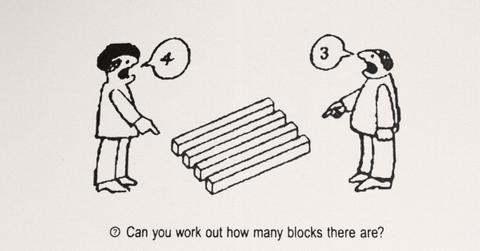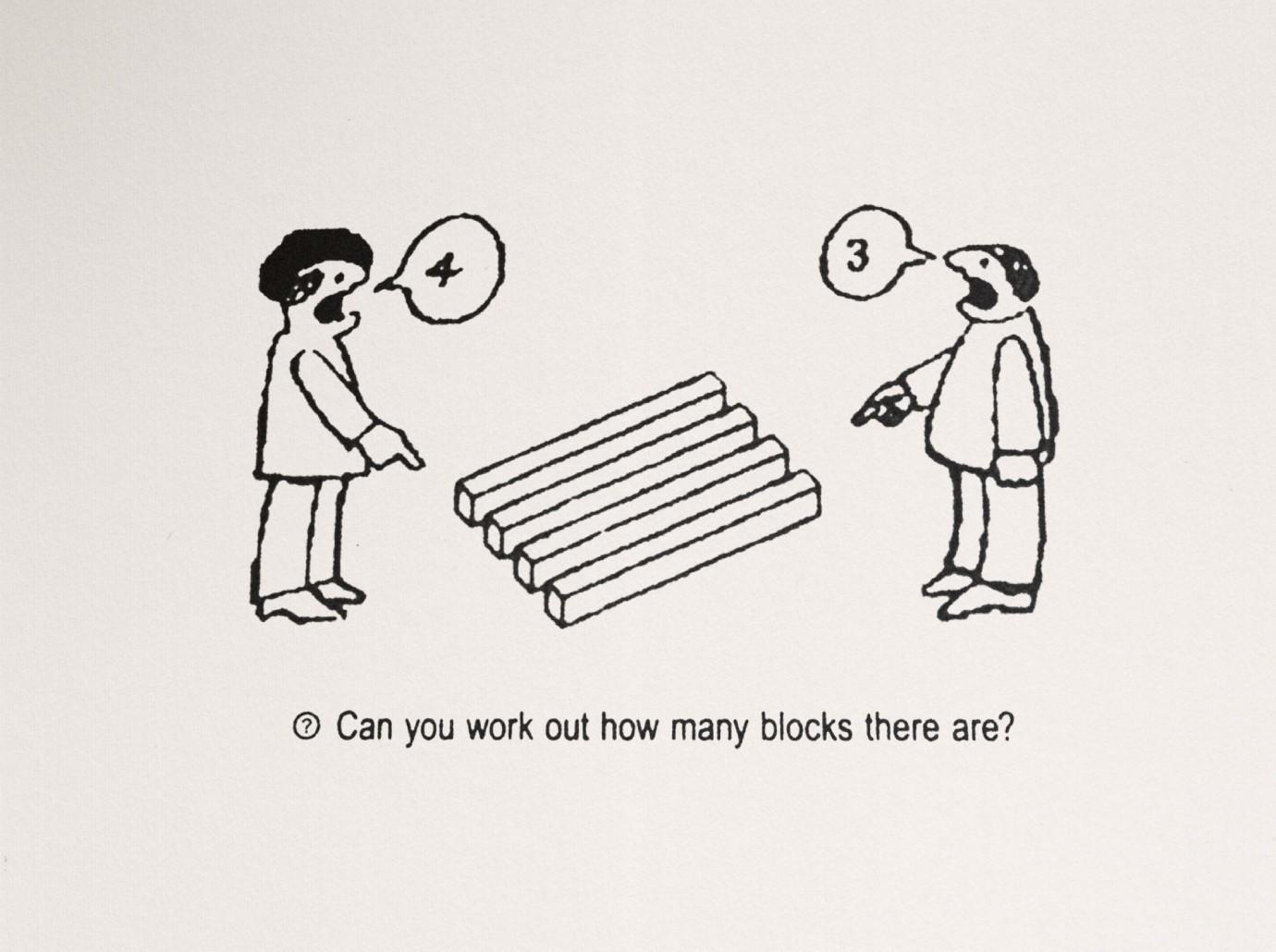 NEWS
NEWSHow Many Blocks Do You See in This Mind-Bending Optical Illusion?

Is this black and white illustration playing mind tricks on you?
Posted to Twitter, the image depicts a set of shapes, with two men arguing over whether they see three or four rectangular blocks.
The artwork confused social media users, who offered their opinion on the illusion.
"How do people see 3 I don't get it," one Twitter user commented, while another wrote, "Twice I've seen 3, but mostly 4."
"I can only see 4 blocks," stated someone else, with an additional social media user writing, "I don't understand how anyone could possibly see four."

Optical illusions may be difficult to wrap your mind around, but the American Museum of Natural History shared an explanation on their website.
"What you see and what you think you see are different things. Your senses gather information and send it to your brain. But your brain does not simply receive this information — it creates your perception of the world," the museum said. "This means that sometimes your brain fills in gaps when there is incomplete information, or creates an image that isn’t even there."
That process is a result of evolution. "Survival depends on fast reactions," the message continued."Your brain has evolved to work quickly to piece together whatever bits and fragments it can get—and to do its best to figure out the rest."
Powered by RedCircle
Want OK! each day? Sign up here!
Never miss a story — sign up for the OK! newsletter to stay up-to-date on the best of what OK! has to offer. It’s gossip too good to wait for!
According to MyVision.org, there are three different kinds of optical illusions: literal, physiological and cognitive.
A literal illusion is "when two images seamlessly look like one image. The brain will try to interpret it as one while the eyes send communication to the brain to analyze it as two."

Physiological illusions "are images formed due to the overuse of the brain’s senses as the brain is susceptible to movement. They occur when the eye perceives too much light, movement, and color, confusing the brain."
Cognitive illusions "are the most complex. They use the subconscious part of the brain and how well the brain relates to the image. The brain is responsible for giving depth to your thoughts and whatever the eyes see."

